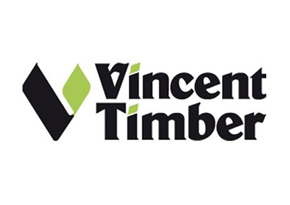Cedar, Central/South American
Latin name: Cedrela spp, Cedrela fissilis, Cedrela mexicana, Cedrela guianensis, Cedrela odorata
Also known as: cedro batata, cedro rosa, cedro vermelho (Brazil), cedro
Wood Type:
Hardwood
Durability:
Durable
Treatability:
Extremely difficult
Moisture Movement:
Small
Density (mean, Kg/m³) :
480
Texture:
Coarse
Availability:
Variable availability at specialist or to order
Price:
Medium
Chemical Properties:
Distinctive odour
Use(s):
Furniture, Joinery - Interior
Colour(s):
Reddish brown

Introduction
Known as 'Cedar', often qualified by country of origin, e.g. Honduras, Belize, Nicaraguan, Tabasco, Trinidad, West Indian, Spanish, Brazilian, Peruvian, Guyana etc., although strictly not a true cedar since these are softwoods.
Environmental
Cedrela odorata is classified as endangered in Colombia and Peru and is listed on the CITES Appendix III. Trade permitted subject to export permits from the country of origin (and re-export permits as appropriate) and UK import permits from the Department for Trade and Industry.Further information and news is available from CITES UK. The IUCN Red List of Threatened Species classifies C. odorata as VU – Vulnerable: at risk of extinction and C. fissilis & C. lilloi as EN - Endangered: at high risk of extinction in the wild. [Information courtesy of Timbmet Ltd]
Distribution
Central American Cedar
Three species of Cedrela are of primary importance in Central America and the Caribbean: Cedrela mexicana M J Roeam, C. guianensis A Juss., and C. odorata L., the first two species being considered synonymous with C. odorata since any variations in their properties can be attributed to the age and condition of individual trees rather than to botanical differences.
South American Cedar
One or more species of Cedrela occurs in every country south of the United States, except Chile. In some countries where a particular species does not occur naturally, it has been widely planted and naturalized. In a commercial sense, there is no fundamental difference between the wood of the different species grown on similar sites. The growth conditions do, however, have a bearing on the type of wood produced from trees grown on different sites. In some countries or areas, there may be two forms of a single species; one form is located along streams or on sheltered, moist sites and provides light-coloured woods of relatively low density; the other form occurs on well-drained hillside forests or on drier sites, and produces denser, more deeply coloured wood. Cedrela species are found particularly in Guyana. French Guiana, Surinam and Brazil, where it occurs from the Amazon to Santa Caterina and Sao Paulo, and westwards to the borders of Paraguay.
The tree
A large tree attaining a height of 27.0m to 40.0m and a diameter of 0.6m to 1.25m or more. Clear boles of 15.0m to 24.0m are common above the buttresses which extend up the tree for 1.5m to 3.5m.
The timber
The heartwood is pinkish to reddish-brown when freshly cut, becoming red or dark reddish-brown, occasionally with a purplish tinge, after exposure. The sapwood is whitish-grey or pinkish in colour. Generally speaking, cedar resembles the lighter grades of Honduras mahogany, but colour depends largely on the age and growth conditions of the tree; the darker-coloured wood is usually produced by trees grown on the drier sites, while that from young trees, especially those of very rapid growth in the open, is less fragrant, lighter in colour, softer, but somewhat tougher than that of older trees or more slowly grown forest trees. The texture is usually medium, although the darker-coloured woods may have a coarser texture than the lighter woods. The grain is usually straight, but occasionally is interlocked. It weighs about 480 kg/m³ when dried, as an average, but the weight is governed by growth conditions. Most wood has a characteristic odour similar to that of coniferous cedar. It is semi-ring porous or ring porous, and therefore has a visible growth pattern on tangential surfaces. Some wood shows gum streaks. In some areas, especially in Guyana, two distinct types of wood are recognised; (1) The darker variety, more straight grained, with a coarser texture and more volatile oil. This type of wood usually comes from trees grown on the drier sites. (2) The lighter coloured variety, not so straight grained, with a finer texture and less volatile oil.
Drying
Generally an easy wood to dry, either in the open air or in a kiln. It dries at a rapid rate with only very minor warping, and only slight checking and end splitting. Under some conditions knots tend to split badly. There is a tendency for individual pieces to distort or collapse during kiln drying, but this may be controlled by using a low temperature schedule.
Strength
Central American cedar is roughly comparable to Honduras mahogany in all strength properties except hardness, resistance to shear and compression and tension across the grain, in which it is a little inferior to mahogany.
Working qualities
Good - Easy to work with both hand and machine tools, with very little dulling of cutting edges. It planes to a clean surface and normally finishes smoothly, but all knives and saws must be kept sharp to avoid the slight tendency to woolliness. The presence of gum in some logs gives a little trouble in planing and polishing, but, in general, the wood stains and polishes well after suitable filling. It takes nails and screws well, and can be glued satisfactorily. It can be peeled cold for veneer and plywood.
Suppliers |
|
|---|---|
Ecochoice Certified Timbers
|
|
English Woodlands Timber Ltd
|
|
Fleming Buildbase
|
|
Gilmour & Aitken Limited
|
|
International Timber
|
|
James Latham plc
|
|
Suppliers |
|
|---|---|
James Latham plc
|
|
International Timber
|
|
Gilmour & Aitken Limited
|
|
Fleming Buildbase
|
|
English Woodlands Timber Ltd
|
|
Ecochoice Certified Timbers
|
|



















